Maximizing the Torsional Modal Eigenfrequency | ||||
|
| |||
Formulation of the Optimization Problem
The optimization task is to maximize the second torsional modal eigenfrequency with a volume constraint of 100% and without any boundaries.
Model: 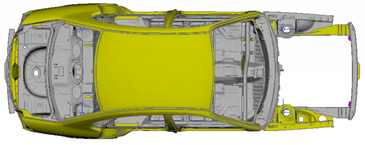 |
f=21.6Hz: 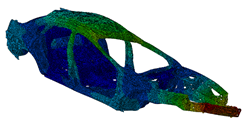 |
f=25.8Hz(must be maximized): 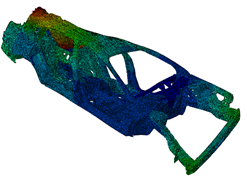 |
f=29.6Hz:  |
f=34.2Hz: 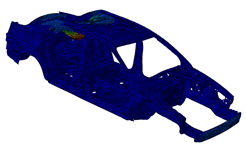 |
f=36.3Hz: 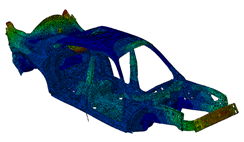 |
f=37.5Hz: 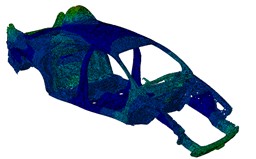 |
In the above figure, you can see the model and the first six modal eigenfrequencies.
Results
As shown in the next figure, the original mode 2 is now mode 4 maximizing the torsional eigenfrequency.
 |
When optimizing a specific eigenfrequency, the order of the eigenfrequencies might change during the optimization iterations.
Consequently, the eigenfrequencies might must be tracked during the optimization iterations.
The tracking is done using mode tracking as described in Mode Tracking.
By default, the modes are not tracked during the optimization. Mode
tracking is activated in OPT_PARAM command:
DRESP
ID_NAME = 2nd_lowest_eigenfrequency
DEF_TYPE = SYSTEM
TYPE = DYN_FREQ
LC_SET = MODAL, ALL, 2
END_
OBJ_FUNC
ID_NAME = maximize_single_eigenfrequency
DRESP = 2nd_lowest_eigenfrequency
TARGET = MAX
END_
OPT_PARAM
ID_NAME = opt_params
OPTIMIZE = maximize_single_eigenfrequency
MODETRACKING = ON
MODENUMBERS = 8
END_
For this example, at least 8 eigenfrequencies should be requested in the finite element input model defined by the user.